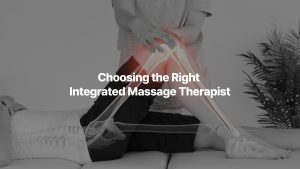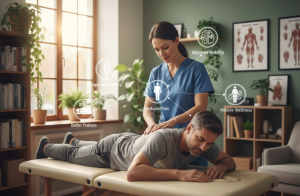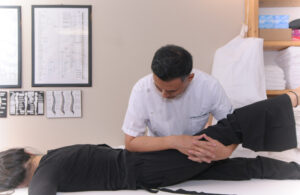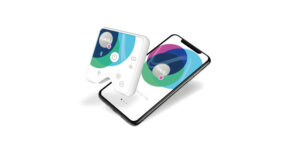Striving To Be Toronto's Best Osteopathy And Massage Therapy Clinic
Frequently Asked Questions (FAQ)
You can find answers below to some Frequently Asked Questions (FAQ) about Osteopathy, Massage Therapy, Reiki and FSM.
General
What to expect after treatment: Feeling better or experiencing temporary discomfort
Some people feel noticeably better right after their first treatment and continue to improve steadily. Others experience what’s known as a healing crisis, where pain or discomfort temporarily increases for a few days after treatment. This reaction is quite normal—it doesn’t mean your condition is getting worse. In most cases, the discomfort fades as your body adjusts, though it can occasionally occur after several sessions.
Let me explain why this happens.
Pain or discomfort often develops as a result of accumulated strain on the body—whether from injuries, accidents, emotional or physical trauma, poor posture, repetitive movements, or even daily habits. For example, slouching at your desk, leaning forward toward a monitor instead of adjusting it closer, how you walk, how you use your phone or computer mouse, or even how you sleep (especially on your stomach) can all create stress patterns in the body.
Over time, these repeated behaviors cause your body to adapt by changing joint positions, altering muscle and ligament length, and even slightly reshaping bones to support these patterns. Manual therapies such as osteopathy works to correct these imbalances by gently articulating joints, lengthening muscles and connective tissues, and encouraging the body to return to a more natural, balanced state.
Because these changes happen in a much shorter time than it took for your body to develop its habitual patterns, it may initially resist or react with discomfort. This temporary pain is not a sign of worsening but rather a normal part of the healing process—your body reorganizing itself to function more efficiently and comfortably.
Why do I have pain in areas unrelated to my original injury?
You may also experience something known as a regression of symptoms during your healing process.
For example, let’s say you come in with lower back pain that seems to appear suddenly. You might not realize that it actually traces back to an earlier injury—perhaps a sprained left ankle from a few months ago. While your ankle eventually healed, you may have unconsciously shifted your weight to your right leg for a while. This compensation could have led to strain in your right knee, then your left hip, and eventually your lower back.
As your body begins to realign and heal through treatment, you might temporarily feel discomfort in the same areas where those earlier issues once occurred—such as your hip, knee, or ankle—before your back finally improves. This is what we call regression of symptoms.
It’s important to understand that this doesn’t mean your condition is getting worse. Instead, it’s a natural part of the healing process—your body revisiting and resolving old patterns of strain on its way back to balance.
When is the right time to get treatment for pain?
If you’ve had a recent injury, accident, or trauma, it’s important to consult your doctor first and get the appropriate diagnostic tests—such as X-rays, MRIs, or ultrasounds—to rule out any serious medical concerns like fractures or dislocations. Once these are cleared and no structural damage is found, but you still experience pain, that’s the right time to begin osteopathic or manual therapy care.
If you haven’t had any injury or trauma but still experience pain or discomfort, it’s best to seek treatment before it becomes chronic—that is, before it lasts longer than two months. Early intervention helps prevent the issue from developing into a long-term or more complex condition.
A good rule of thumb is this:
If your pain or discomfort persists for more than one to two weeks without improvement—or if it gradually worsens in frequency, duration, or intensity—even without a clear cause, it’s time to get it checked.
In many cases, pain results from accumulated strain due to repetitive daily movements, posture habits, or even an old injury that your body has been compensating for. These small imbalances build up over time and can eventually cause persistent discomfort.
The best time to get treatment is before the pain becomes constant. Once discomfort is present all the time, it often takes longer for your body to respond and recover. Early care allows your body to rebalance more efficiently and helps prevent chronic issues from developing.
What are some signs I need to get my pain treated?
If your pain improves with rest but keeps returning during activities such as walking, sitting, standing, lifting, or exercising, it’s a good indication that something in your body isn’t functioning as it should.
This kind of recurring pain often means your body is compensating for an imbalance—perhaps from posture habits, muscle tension, or restricted joint movement. While rest may temporarily ease the discomfort, the underlying issue remains and tends to resurface whenever you move or resume normal activities.
Seeking treatment at this stage can help identify and correct the root cause before it develops into a chronic or more complex condition.
Why regular treatments support long-term health
The spine protects the spinal cord, which serves as the main communication pathway between the brain and the rest of the body. From the spinal cord, nerves branch out to supply every structure in the body—muscles, ligaments, bones, and even internal organs. When the spine is misaligned or restricted, it can interfere with the normal flow of nerve impulses and blood circulation, limiting the body’s ability to heal and function optimally. Over time, these imbalances may lead to recurring pain, stiffness, or reduced mobility.
Regular osteopathic or manual treatments help maintain proper spinal alignment, improve circulation, and support the body’s natural healing mechanisms. Even if you don’t currently feel pain or discomfort, periodic care—such as once a month or every couple of months—can prevent problems from developing, promote faster recovery from injuries, and support long-term health and balance.
Prevention is the best strategy. Studies suggest that 60–80% of people will experience some level of lower back pain at some point in their lives. One theory is that this is the result of the many falls and minor injuries we accumulate from childhood onward. For example, research on toddlers learning to walk shows that 12- to 19-month-olds average 2,368 steps and 17 falls per hour, totaling over 30,000 falls per year as they develop balance. This doesn’t even account for additional injuries from activities like biking, skating, or skiing as we grow.
By maintaining spinal health through regular treatments, you give your body the best chance to recover from past stresses, adapt efficiently to everyday movements, and prevent minor issues from turning into chronic pain later in life.
Doesn’t the body heal itself?
Our bodies are remarkable at adapting to injuries and initiating their own healing processes. However, not all injuries heal perfectly. Sometimes, residual imbalances or improperly healed tissues can remain.
When combined with certain movements or repetitive stress—such as sitting for long hours at work, participating in intense sports, crossing legs frequently, or repetitive use of a phone, tablet, or computer—these unresolved issues can trigger pain or discomfort. Even seemingly minor, everyday actions like using the same hand to pick up objects, opening doors, or using utensils repeatedly can contribute over time.
Regular assessment and treatment help identify these hidden imbalances, allowing the body to function more efficiently and reducing the likelihood of pain re-emerging.
What happens to our body when we injure ourselves?
Whenever we experience an injury or trauma, the sensory signals from that event travel through the spinal cord to the brain. This allows the body to respond immediately—whether it’s moving away from harm, activating muscles to stabilize, or triggering healing responses.
However, strong or repeated injuries can sometimes create lesions or restrictions in the spine. These are areas where movement becomes limited, or the spinal alignment is disrupted. Examples include:
Severe falls
Car accidents
High-impact sports injuries
These spinal restrictions can interfere with nerve communication between the brain and the rest of the body. Over time, this may lead to:
Reduced mobility – joints and muscles may feel stiff or less flexible.
Persistent pain or discomfort – even after the original injury has healed.
Impaired healing – the body may struggle to fully recover from minor injuries.
Think of it like a road network:
Normally, the spinal cord is the main highway, and nerves are the roads connecting every part of your body to the brain.
When the spine is misaligned, it’s like having roadblocks or traffic jams—messages can’t travel efficiently, and some areas may not get the “instructions” they need to heal properly.
By addressing these restrictions through osteopathic or manual treatments, the “traffic” in your nervous system can flow smoothly again. This helps your body restore proper function, reduce pain, and improve healing from past and future injuries.
Osteopathy
What can I expect during my first treatment?
At your first visit to Integrated Bodywork, we will:
- Determine treatment goals
- Feedback and self-care
First-time Assessment
At your first visit you will be asked to fill out a health history form if you haven’t filled it out online, which your practitioner will discuss with you while addressing your concerns and answering any questions you may have. Your practitioner will perform orthopedic assessments and osteopathic assessments before and after each session to best determine your course of treatment and to check the progress in subsequent treatments as well. It is recommended to bring a loose pair of shorts/yoga pants and sports bra/tank top/tee shirt which will allow the practitioner to assess and treat your spine and move your body parts freely and efficiently.
Treatment
The practitioner will gently and precisely maneuver your body to assess and treat it at the same time, and apply a variety of non-invasive, yet very effective techniques according to the quality and response of the tissues being treated throughout the session. Feel free to ask questions or provide feedback to the practitioner throughout the session.
Consultation
Your practitioner will listen to your feedback and may offer suggestions for self-care to support your condition and enhance the effects of your treatment. Follow-up sessions may be suggested and booked at this time.
How and why osteopathy works to treat pain
Osteopathy is an established and recognized system of healthcare that relies on manual contact for both assessment and treatment. It integrates the whole person—body, mind, and spirit—emphasizing the body’s intrinsic ability for self-healing without the use of drugs.
An Osteopathic Manual Practitioner views each individual as a unified system, rather than a collection of separate parts. From this perspective, pain is understood not only as a physical issue but as the result of complex interactions among physical, psychological, and social factors—a concept known as the “biopsychosocial” approach. The perception of pain is influenced by more than just tissue injury; it is also shaped by one’s emotional state and social environment.
The aim of an Osteopathic Manual Practitioner is to optimize the body’s self-healing mechanisms and restore balance throughout the system. By using gentle, hands-on techniques, the practitioner supports the body’s natural capacity to recover and function efficiently.
A key part of osteopathic care involves building a trusting relationship between practitioner and patient. This helps identify not only the physical causes of pain but also any non-physical contributors, such as stress or lifestyle factors. This comprehensive understanding allows the practitioner to create an effective, individualized treatment plan for pain relief and overall well-being.
The frequency of treatments is based on the initial assessment and the body’s response to care. Sufficient time is allowed between visits to enable the body to integrate and adapt to the changes that occur from one treatment to the next, ensuring a gradual and lasting improvement.
What conditions can osteopathy help with?
Osteopathy is a gentle, hands-on therapy that focuses on improving how your body moves and functions. Many people come to see an osteopath for relief from pain, better mobility, and support with recovery.
Here are some of the most common areas osteopathy is known to help with:
✅Muscle & Joint Pain
- Back pain (both recent and long-term)
- Neck pain and stiffness
- Shoulder problems (frozen shoulder, rotator cuff strain)
- Hip, knee, ankle, and foot pain
- Sciatica and nerve irritation
- Arthritis-related aches and stiffness
- Sports and exercise injuries
✅ Posture & Everyday Strain
- Work-related aches from sitting or lifting
- Repetitive strain injuries (e.g., wrist, elbow, or shoulder pain)
- Poor posture from desk work, driving, or phone use
- Scoliosis and spinal alignment concerns
✅ Headaches & Jaw Issues
- Tension headaches and migraines related to muscle tightness
- Jaw pain and clicking (TMJ problems)
✅ Breathing & Circulation Support
- Chest and rib tightness affecting breathing
- Swelling and circulation issues
- Support for asthma-related musculoskeletal tension
✅ Digestive & Abdominal Support
- Bloating and constipation (linked to abdominal muscle tension)
- Discomfort from stress-related digestive issues
- Reflux and diaphragm tightness
✅ Pregnancy & Postpartum Care
- Back, hip, and pelvic pain during pregnancy
- Rib and chest discomfort as the body changes
- Support for recovery after childbirth
✅ Support for Babies & Children*
- Unsettled sleep
- Feeding or latching difficulties
- Head shape changes (plagiocephaly)
*Provided by osteopaths with training in pediatric care
✅ Chronic & Complex Conditions
- Fibromyalgia
- Chronic fatigue (supporting mobility and pain relief)
- Post-surgical recovery support
How to care for your body after osteopathy treatment
After a treatment, your body begins to adjust to the changes made during your session. It’s normal to experience a short adjustment period lasting about 24–48 hours.
✅ Common Reactions
- Soreness or stiffness
Like the feeling after a workout. This usually eases within a day or two. - Fatigue
Your body may use extra energy to readjust, leaving you feeling more tired than usual.
- Improved mobility and relaxation
Many people notice greater ease of movement, relaxation and energy right away. - Temporary increase in symptoms
Sometimes your original discomfort may briefly flare up, or new aches may appear. This is a normal part of the body’s adjustment and healing response.
- Other sensations
Some people report mild headaches, light dizziness, changes in mood, or shifts in digestion. These are temporary and typically pass quickly.
💧 Post-Treatment Care (First 24–48 Hours)
- Rest and hydrate – Give your body recovery time and drink plenty of water.
- Avoid strenuous activity – Skip heavy lifting, intense workouts, or physically demanding tasks.
- Gentle movement – Light walking or stretching can help circulation and reduce stiffness.
- Follow your practitioner’s advice – Complete any recommended home care or exercises.
⚠️ When to Contact Your Practitioner
Please reach out if you experience:
- Severe or persistent pain
- Significant swelling or unusual symptoms
- Reactions lasting more than a few days
Your practitioner can guide you further and adjust your treatment plan if needed.
✨ Remember: mild reactions are a normal part of your body’s healing and adjustment. Most people feel the benefits—such as reduced tension, greater mobility, and improved wellbeing—within a short time.
Massage Therapy
How massage therapy works to relieve discomfort and pain
A massage therapist may use a variety of techniques to release tension and restore energy. Our partitioners does not use massage oils. You simply need to wear loose, comfortable clothing.
What to expect from your treatment
Before a treatment, we take a health history and then give you an initial assessment based on various tests to determine the condition of your muscles and joints. We then propose a personalized treatment plan. All your personal and health information is completely confidential. Your health record cannot be released or transferred without your written consent.
To read more about Massage Therapy, please visit the website of The College of Massage Therapists of Ontario.
What to expect after treatment?
After a massage session, your body begins to respond to the treatment. It’s common to feel a mix of relaxation and physical changes as your muscles and nervous system adjust. Most of these effects are temporary and part of the healing process.
✅ Common Post-Massage Reactions
- Soreness or tenderness – Similar to how you feel after exercise; this usually resolves in 24–48 hours.
- Fatigue or sleepiness – Your body may enter a deep state of relaxation, so rest is often needed.
- Increased relaxation and mobility – Many people feel lighter, looser, and more at ease in their body.
- Temporary increase in discomfort – Occasionally, symptoms may feel slightly worse before improving as circulation and tissue changes occur.
- Other shifts – Some notice changes in mood, digestion, or even vivid dreams as the body releases tension.
💧 Post-Treatment Care (First 24–48 Hours)
- Hydrate well – Drink plenty of water to help flush out metabolic by-products released during massage.
- Rest and listen to your body – Take it easy, especially if you feel drowsy or sore.
- Gentle movement – Light walking or stretching can reduce stiffness and improve circulation.
- Avoid strenuous activity – Hold off on intense workouts or heavy lifting until your body feels ready.
⚠️ When to Contact Your Therapist
- If soreness turns into sharp or severe pain
- If unusual swelling, dizziness, or other concerning symptoms appear
- If discomfort lasts more than a few days
✨ Massage therapy is designed to support your body’s natural healing process. Temporary effects are part of your system adjusting, and most people notice lasting benefits such as reduced tension, better sleep, and a greater sense of wellbeing.
Reiki Energy Healing
What conditions can reiki help with?
The goal of Reiki Healing is to balance and harmonize the body’s energy systems, helping the body heal itself. For that reason, Reiki has the potential to help with a multitude of conditions, such as:
- reduced stress and enhanced relaxation
- improved sleep and digestion
- increased focus and mental clarity
- balanced emotions and a sense of grounding
- strengthened immune function and energy flow
What to expect after seeing a reiki practitioner?
- reduced stress and enhanced relaxation
- improved sleep and digestion
- increased focus and mental clarity
- balanced emotions and a sense of grounding
- strengthened immune function and energy flow
Frequency Specific Microcurrent(FSM)
Who developed FSM?
FSM was developed by Dr. Carolyn McMakin in 1995 using frequencies passed on from an osteopath in Canada who had a practice that came with a machine made in the 1920s. Dr. McMakin developed protocols for the treatment of myofascial pain in 1996 and presented her clinical data at the American Back Society national meeting in December 1997. In 1998, she published the paper on the “Treatment of chronic resistant myofascial pain in the head, neck, and face” in Topics in Clinical Chiropractic, in addition to other papers on Frequency Specific Microcurrent.
How does FSM work?
Our brain uses electric signals to communicate with our bodies. The brain can send signals such as “activate this muscle” and receive messages from the spinal cord, such as “pain.” FSM uses the same type of electric current to affect change within the body. Different frequencies can help eliminate pain or reactivate cells that have shut down due to injury, allowing them to receive nutrients to enable healing. FSM treatment has been known to increase the production of adenosine triphosphate (ATP) by 500 percent. ATP is what cells use for energy.
Frequencies are pulses per second measured in hertz. They can be sound waves or electronic pulses. The frequencies used in FSM are electromagnetic pulses used on two channels firing at the same time. The frequencies are delivered using a ramped square wave that includes high frequency harmonics to create the square wave. The makes the frequencies more accurately pulses rather than the pure frequencies achieved with a sine wave generator. Most microcurrent devices use square wave pulses because they have been observed to be more effective clinically.
The frequency thought to address or neutralize the condition is put on channel A. The frequency thought to address the tissue is put on channel B. The frequencies used in FSM are all less than 1000 Hz. There are frequencies from the list alleged to address over 200 conditions from very common conditions like “inflammation”, “scar tissue”, “mineral deposits” and “toxicity” to very unusual and hard to document conditions like “polio virus”, “trauma” and congestion. There can be no claims made for the effects of the frequencies until research has documented their effects. All that can be said is that use of this or that frequency had this observed effect in this patient with a certain condition.
There are a few frequencies that are used as A/B pairs. A is not a condition, B is not a tissue but the combination of the two frequencies appears to have a therapeutic effect. There is one such frequency combination that takes away shingles pain. When this combination is used before the blisters break out for an hour a day for three days the pain is gone in 20 minutes and the blisters never break out. When this combination is used for two hours on active shingles, after the blisters appear, it eliminates the pain and shortens the course from the normal 6 weeks to four to five days. The pain never returns. Shingles is the only thing this frequency combination is good for and, so far, there has not been a patient who did not respond in an expected way.
Dr. McMakin didn’t develop the frequencies. The frequencies were developed between 1910 and 1934 by medical and osteopathic physicians using an entirely different machine and system of treatment. The frequencies are used clinically; the effects are documented in chart notes and serve as a basis for the development of protocols that appear to be effective for different clinical conditions. The protocols are taught during FSM seminars and then it is determined if the effects are reproducible based on feedback from practitioners. There are four peer-reviewed published papers documenting the effects in the treatment of myofascial pain from trigger points, neuropathic pain from fibromyalgia associated with spine trauma and delayed onset muscle soreness.
What is a typical FSM session like?
The session may take 45 to 90 minutes depending on conditions. You must be well hydrated for the FSM to be effective. During a FSM session, you rest comfortably on a treatment table while the microcurrent is delivered through electrodes or damp towel placed on the area of treatment. Because the current is the same as what your nerves produce, there is no unpleasant sensation. This subtle stimulation of cells reduces inflammation, breaks up scar tissue, eases pain sensations, and accelerates post-surgery or post-injury recovery. It has even been known to elevate mood, help shrink fat cells, and tighten skin! That’s pain relief with an added bonus.
What are the effects of microcurrent?
In 1982 Ngok Cheng published, “The Effect of Electric Currents on ATP Generation, Protein Synthesis and Membrane Transport in Rat Skin in Clinical Orthopedics” (volume 171: pages 264-272). This study showed that microcurrent increased ATP production in rat skin by 500%. ATP is the chemical that the body uses for energy. The current also increased amino acid transport into the cell by 70% and waste product removal. The implications for human healing and repair are obvious. ATP production was increased as long as the current was below 500 microamps. When the authors increased the current to 1000 micro amps, or one milliamp, a current range delivered by TENS devices and other types of electrical stimulation therapies, the ATP production was actually reduced.
What is the difference between a microcurrent device and Tens?
TENS devices deliver current in the milli-ampere (mA) range. and block pain messages that are trying to get up the spine to the brain. FSM works on a cellular level, delivering subsensory micro-amperage current, 1,000 times less than milli-amperage current, which has been shown in published studies to increase ATP production in tissues.
What conditions FSM are effective with?
FSM is very effective with many conditions but we are specialized in :
- Concussion
- Fibromyalgia associated with cervical spine injury
- Fractures
- Kidney stone pain
- Myofascial pain
- Neuromuscular pain and inflammation
- Osteoarthritis
- Peripheral neuropathy
- Post-surgical pain
- Sciatica
- Shingles
- Sinusitis
- Spinal Disc Pain
- Sports injuries
- Sprains/strains
- Tendon and ligament injury or pain
- Vulvodynia (Chronic Pain or discomfort around vulva) pain management
- Whiplash
What are some of the risks or side effects of FSM?
FSM is contraindicated for people with a pacemaker, pregnant women. Otherwise, there are no known risks to either the patient or the practitioner as long as the FSM unit is used correctly. Side effects, which are minimal, may occur in some patients and can be eliminated with proper hydration.
The side effects include:
Fatigue
Nausea
Drowsiness
Occasionally an increase in pain
Euphoric feeling due to the increased endorphins
They usually start 90 minutes after a treatment and may last for 4 to 24 hours.
Are there any risks to the practitioner or to the patient?
Dr. McMakin has been using FSM since 1994 and various practitioners have been using it since 1997. There have been no permanent adverse effects attributable to the use of the microcurrent units or to the use of the frequencies. There are two effects to be considered- the effect of the current and the effect of the frequencies. The practitioner is protected from the current by wearing latex gloves and is therefore not affected by the current. The practitioner is in the field created by the frequencies and the resonance effect experienced by the patient. This field can be perceived by some practitioners and is either pleasant or bothersome depending on the practitioner’s ability to process the sensations.
The sensation is usually perceived as being “light or floaty” and lasts only as long as the practitioner is using a frequency that is producing a positive effect on the patient. In every class, there is a bell-shaped curve of sensitivity to this sensation. 10% of the class will not feel anything at all in response to the frequencies. 10% of the class will feel a strong sensation of being “floaty or light headed (not dizzy) or slightly “stoned”. The rest of the class will have perceptions someplace in between those two groups. Patients fall into roughly the same bell-shaped curve of sensitivity. The “floaty feeling” response occurs not as a result of any particular frequency but in response to any frequency that resonates with the patient’s condition.
There are no risks to the patient that we know about as long as the practitioner follows the proper contraindications and precautions associated with both FSM and the use of microcurrent. There are frequencies used to remove scar tissue that should not be used with 6 weeks of the time of a new injury. Sometimes when muscles are successfully treated the range of motion increases so much that joints and nerves can become temporarily painful until the range of motion goes back down. Practitioners are aware of these possible reactions and are advised to warn patients about them. After muscles are treated there is sometimes a detoxification reaction that occurs 90 minutes after treatment similar to that seen with massage therapy. This can be lessened by having the patient drink water and take an anti-oxidant combination supplement.
Why is hydration so important for FSM?
Hydration is critically important for FSM because water is the primary medium through which the electrical current is conducted in the body.
Here’s a breakdown of why hydration is essential:
Optimal Electrical Conductivity: FSM uses an extremely low level of electrical current (microamperes), which is the same as the current naturally generated by the body’s cells. For this faint current to travel effectively through tissues, the patient must be well-hydrated. Dehydration significantly increases the electrical resistance of tissues, which can reduce or completely negate the therapeutic effects of the microcurrent.
Facilitates Tissue Resonance: FSM works on the principle of biological resonance, where specific frequencies are intended to “resonate” with and change the function of specific tissues (e.g., muscle, nerve, or scar tissue). This resonance and the resulting cellular changes are thought to be dependent on the body’s natural bioelectrical pathways, which require water to function optimally.
Aids in Detoxification: The microcurrent therapy is believed to increase cellular metabolism and accelerate the healing process, which can lead to the release of metabolic waste or “toxins” from the cells into the bloodstream. Drinking plenty of water before and after treatment helps the body flush out these by-products, minimizing potential side effects such as fatigue, nausea, or a temporary increase in pain.
For FSM to be effective, it is typically recommend that patients drink a significant amount of water (often 1 quart/liter or more) in the hours immediately preceding their treatment. Caffeinated or alcoholic beverages do not count toward this total as they can be dehydrating.
Have a question? Just call or text us at 647-388-7435 or email us at info@ibodywork.ca.
Read About Reiki Energy Healing










